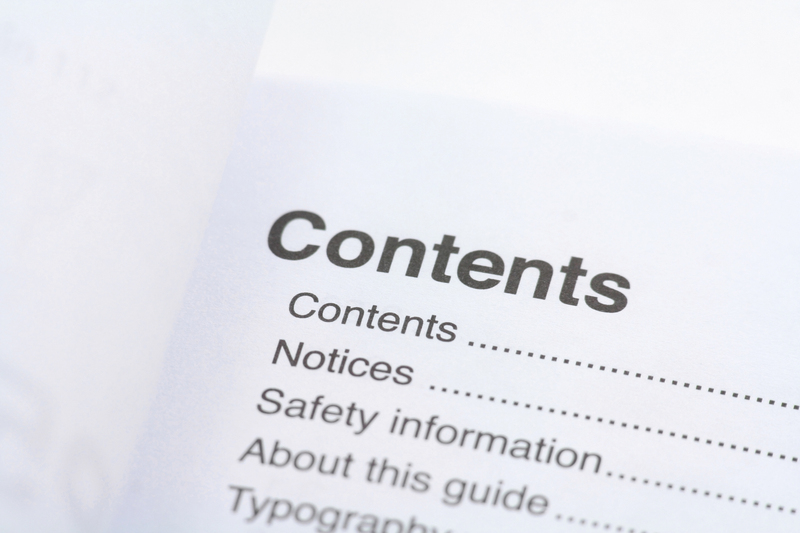The Hidden Challenges of DIY Piano Moving
Posted on 22/06/2025
The Hidden Challenges of DIY Piano Moving
Pianos are more than just musical instruments; they're cherished centerpieces, valuable investments, and often sentimental heirlooms. For many homeowners, the idea of moving a piano without professional help--opting for a DIY piano move--can seem appealing. After all, you could save money, control the process, and maybe even feel a sense of accomplishment. But before you gather a few friends and grab a dolly, it's crucial to understand the hidden challenges of DIY piano moving.

Why Are Pianos So Difficult to Move?
At first glance, a piano might look like just a big, awkward piece of furniture. But under the lid, it is an intricate machine with hundreds of moving parts--hammers, strings, pedals, and a heavy cast-iron plate responsible for a large portion of its weight. Grand pianos and upright pianos each present their own unique difficulties. Understanding these challenges is essential for anyone even considering a DIY piano move at home.
Weight and Size
- Upright pianos typically weigh between 300 to 500 pounds.
- Grand pianos can weigh anywhere from 500 to over 1,200 pounds.
- The sheer bulk makes them awkward to handle, especially around corners and stairs.
Fragility and Sensitivity
Pianos contain about 10,000 moving parts. A small jolt, bump, or drop can damage the delicate inner workings, result in tuning issues, or cause expensive repairs. The finish of a piano is also prone to scratches and dents during self-moving attempts.
Unbalanced Weight Distribution
The weight of a piano is often unevenly distributed, making it challenging to lift, carry, and set down safely. Most of the weight is in the iron harp or plate, usually set toward the back of the instrument. This can cause unexpected tipping and injuries if not handled properly.
The Real Costs of DIY Piano Moving
One of the main motivations for undertaking a DIY piano move is to save money. However, the hidden costs and potential risks can far outweigh professional movers' fees. Let's break down what's really at stake.
Potential for Injury
- Back injuries are common when lifting and maneuvering heavy, awkward loads.
- Fingers, hands, feet, and even toes are at risk of being pinched, crushed, or broken.
- Moving a piano up or down stairs multiplies these risks significantly, especially for inexperienced movers.
Piano Damage
- Improper moving techniques can damage legs, pedals, keys, hammers, and internal mechanisms.
- Scratches, chips, and dents can compromise the look and value of the instrument.
- Repairs and retuning costs can run into hundreds or thousands of dollars--sometimes more than professional movers would have cost in the first place.
Property Damage
- Pianos can easily damage floors, walls, and doorways during an unplanned move.
- Getting stuck in narrow halls or stairwells may require costly repairs to your home.
Overlooked Factors During a DIY Piano Move
It's not just the weight and size that make piano moving yourself so challenging. There are a number of factors that first-timers often underestimate or forget.
Logistics and Planning
- Route Mapping: Measuring doorways, hallways, and stairwells is vital before the move begins.
- Disassembly: Grand piano legs usually need to be removed and the pedal lyre unscrewed. Do you know how to do this safely?
- Protective Padding: Proper padding and wrapping protect both your piano and your home's finishes.
- Secure Loading: Specialized straps and boards prevent the instrument from tipping or sliding inside a moving truck.
Lack of Proper Equipment
- Standard furniture dollies are rarely sufficient for the weight and size of a piano.
- You'll need piano moving skids, ramps, heavy-duty dollies, and lifting straps--tools professionals use but you may not have on hand.
The Role of Weather and Environment
Unlike moving most furniture, the environment can dramatically impact the safety and feasibility of a do-it-yourself piano move:
- Rain or humidity can cause wood to swell or warp, and increase the risk of slipping accidents.
- Extreme cold may freeze lubricants or make parts brittle, risking internal breakage.
- Muddy, icy, or uneven sidewalks spell disaster for heavy rolling equipment and your back.
Common Mistakes with Self-Moving a Piano
When moving a piano as a DIY project, even careful planners often fall victim to hidden pitfalls:
- Underestimating manpower: Three or four strong helpers might not be enough for large grand pianos, especially if stairs are involved.
- Improper lifting: Grabbing the piano by its fragile legs, keyboard lid, or other weak parts can result in structural damage.
- Forgetting tuning needs: Even a smooth move may require retuning afterwards, as pianos are highly sensitive to movement and vibration.
- Insecure load during transport: Pianos not tightly secured in a moving truck are at serious risk of tipping or damage during transit.
The Value of Professional Piano Movers
Given these extensive challenges, it's no wonder that many homeowners ultimately turn to professional piano movers. These experts aren't just strong--they're trained in the safest and most effective techniques for moving all types of pianos, whether it's an upright, baby grand, or concert grand.
What Do Piano Moving Specialists Offer?
- Experienced teams who know how to disassemble and handle pianos safely.
- Specialized heavy-duty equipment designed specifically for piano moving.
- Insurance coverage for accidental damage--something a DIY mover won't have.
- Climate-controlled vehicles when moving high-value instruments over long distances.
Safety Tips for DIY Piano Moving (If You Must Try)
If you're undeterred and still determined to manage a DIY piano relocation, it's essential to approach the job as carefully as professionals do. Here are some vital safety tips to minimize the risk:
Gather the Right Tools
- Heavy-duty piano dolly rated for your instrument's weight.
- Moving straps and blankets to stabilize and protect the piano and your home.
- Sturdy work gloves to protect your hands against pinch points.
- Ramps for stairs or entryways.
- Protective floor coverings to prevent scratches and dents.
Plan Every Step
- Measure all doorways, halls, and stairs in advance--don't leave this important step for moving day.
- Enlist more helpers than you think you'll need. When it comes to pianos, more hands make safer work.
- Assign clear roles: lifters, guides, and spotters--especially for navigating stairs and corners.
- Clear the entire path beforehand, removing rugs, furniture, and obstacles.
Proper Technique Is Critical
- Always keep the piano upright; laying it on its side can damage the action or soundboard.
- Lift with your legs, not your back, and use lifting straps to distribute weight evenly.
- Move slowly and communicate constantly with your team. Never rush the process.
- Keep the piano wrapped and padded at all times to protect both the instrument and your home.

When Should You Hire the Pros?
With all the risks and hidden challenges of moving a piano yourself, sometimes hiring a professional is the only truly safe option:
- If your piano must be moved up or down any stairs, especially a grand or baby grand.
- If the instrument needs to be hoisted through a window or over a balcony.
- If you're moving the piano more than a few feet, or transporting it to another city.
- If your piano has sentimental or significant dollar value.
- If you lack the necessary team, equipment, or experience.
Conclusion: Is the DIY Approach Worth the Risk?
For most households, the answer is clear: the hidden risks and challenges of DIY piano moving far outweigh the potential savings. Between the threat of injury, potential for expensive damage, and logistical headaches, moving a piano without professional assistance is a job best left to trained experts. If you do choose the DIY piano moving method, invest in proper equipment, plan your move meticulously, and prioritize safety above all else.
Ultimately, safeguarding your piano ensures that both the music and memories it holds remain uncompromised. Whether you move it yourself or hire certified piano movers, never underestimate what it takes to move this king of instruments without mishap. For your health, your piano's longevity, and peace of mind, sometimes the wisest move is to trust the professionals with your prized piano.







